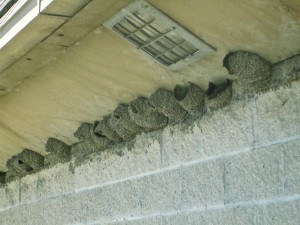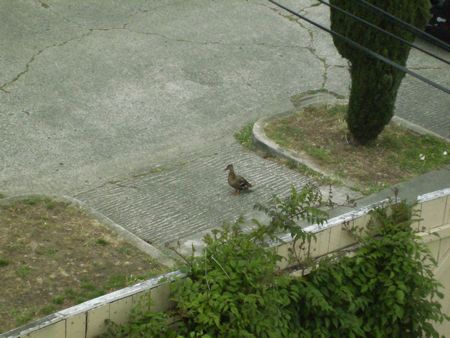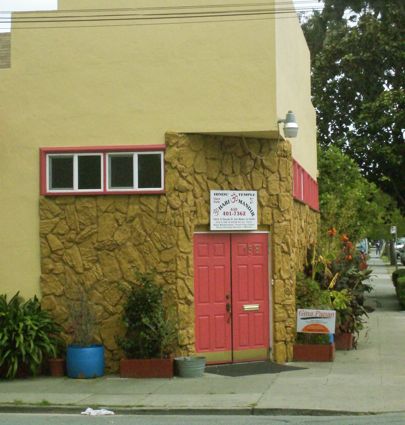At lunchtime, I went for a walk at Baylands Nature Preserve along the Bay in Palo Alto. One of the first things I saw was a baby American Avocet, still with downy plumage, sweeping the water for small invertebrates. American Avocets are a precocial species, so this little baby was pretty much on its own; there were no adult birds nearby.

A little further on I saw a line of Cliff Swallow nests on a building. The swallows pick up some mud in their bills, then fly up and apply it to the nest, gradually building the structure out so as to completely enclose the nesting birds except for small entry holes. The two nests closest to the camera are darker around the entry holes; that’s where mud has been recently applied, and the damp mud is darker than the dried mud.
I kept walking out the dike along Charleston Slough, past other birds that are I guessed were nesting, though I didn’t actually see a nest or babies: Forster’s Terns, Marsh Wrens, a Northern Harrier, Snowy Egrets, Mallards. About a mile and a quarter from the parking lot, I could finally see the California Gull nesting colony. The gulls were screaming and flying in swirling circles above the colony, and as I got closer I could see why: two researchers had kayaked out to the colony, and were walking around with clipboards checking out the nests. The gulls were divebombing them, and through my binoculars, I could see that the researchers were wearing helmets and jackets for protection.
I watched for a while; I like watching gull nesting colonies, and the addition of the invading researchers made it even more entertaining. Then it was time to head back to work, so I walked back to the parking lot, my mind completely emptied of everything except for birds, sun, mud, and nests.




